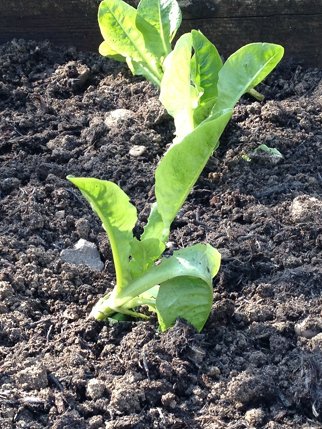There are many maths activities around growing plants, especially involving measuring. Take things further this year with the fantastic resources for teachers from the RHS's Campaign for School Gardening and look at their work on the Rocket Science project with our British astronaut Tim Peake. They are testing seeds stored in space for 6 months alongside seeds that stayed on Earth - will being in space make a difference?
The Royal Horticultural Society (RHS) Campaign for School Gardening has some great resources around growing plants and vegetables in schools to support teaching maths, science and other subject areas (there are a number of typing/spelling errors on this site, but don't be put off - just focus on the maths content).
These are my favourites for primary maths:
These are my favourites for primary maths:
Reception/KS1
• Watering plants - water the correct amount by counting to 5 and counting to 5 again.
There is a great version of the rhyme '1, 2, 3, 4, 5, once I caught a fish alive'. They can dig down 10cm and check the correct watering has been completed.
• Make a measuring stick - find different planting distances on seed packets
Measure and mark a stick with pictures of different vegetables and their planting distances.
• How tall is that tree? - simple method of looking between your legs to measure tree height.
Use a tape measure or trundle wheel to measure distances along the ground.
• Tessellating Twigs - collect twigs of different lengths.
Place the sticks in length order, match 3 sticks of the same length and make a triangle, 4 to make squares and 5 to make pentagons. You can also make rectangles and show that opposite pairs of sides are the same length. Although they suggest tessellating patterns, this may not be so easy in practice.
KS2
• Estimating Environments - what is the total surface area of the leaves on a tree and how much might they weigh?
Counting real objects gives practical help to develop a concept of how many makes 50, 100 or 1000. It uses counting in steps of 20 and 50 and multiplying and dividing by 10 and 100.
• Volumetric Vegetables - using a measuring jug of water to find the volume of a vegetable.
I would add to this and start with calculating the volume of cubes and cuboids in water, that can also be calculated using the formula h x w x l. For most of your class use the water displacement method to find the volume of mis-shaped vegetables, but you can ask your more able upper KS2 children to look at the formula given for finding the volume of a cone shaped vegtable.
• Tree Canopy Maths - calculating the perimeter and area of a tree canopy.
Using paces and metres measure points from the tree, then the perimeter. Draw a scale of the canopy in centimetres.
• Strawberry Patch Maths - how many fruit plants will fill a set space of garden?
Calculate the number of each type of fruit that can be planted in a set area. Alternatively what size plot is needed to grow each set of fruit plants: 12 strawberry, 12 raspberry plants, 12 blackcurrant bushes. How does the shape and area change depending on how many short rows are grown or long rows?
Related articles
Maths activities for spring - growing vegetables
Practical maths ideas planning the vegetable plot, buying and selling, planting out and care and recording plant development and progress.
Teaching maths in context -using a load of potatoes
A maths inspire day based around potatoes and a school visit from the Amazing Potato Factory
Maths mystery - with a space theme
What is the job of each astronaut? How many space flights have they each been on?
Maths activities for spring - growing vegetables
Practical maths ideas planning the vegetable plot, buying and selling, planting out and care and recording plant development and progress.
Teaching maths in context -using a load of potatoes
A maths inspire day based around potatoes and a school visit from the Amazing Potato Factory
Maths mystery - with a space theme
What is the job of each astronaut? How many space flights have they each been on?
The Rocket Science Project
Tim Peake together with the RHS have inspired 10000 schools to use seeds to grow rocket salad leaves. In September 2015 2kg of rocket salad seeds were sent to the International Space Station and then returned to Earth in March 2016.
The schools will compare the growth of the rocket from the seeds that went into space with those seeds that stayed on Earth. The experiment starts in April and will last for 35 days.
STEM have produced resources to engage primary students with this Rocket Science experiment that includes some use of maths.
• Plan an Astro Garden
• Design and Make a tabletop greenhouse
There is a taster pack and then you can register for free to access all the other resources.
They are not just maths activities but will be useful for building up your bank of resources for either a space or food themed topic.
STEM is a highly recommended site for all primary maths teachers with a useful primary mathematics resources section.



